Asian Cat
The Enigmatic Burmilla: A Tale of Elegance and Charm
A Serendipitous Beginning: The Origin and History of the Burmilla Cat
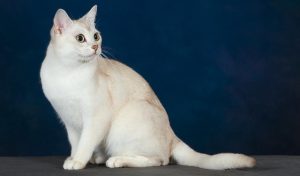 The enchanting story of the Burmilla began in the United Kingdom in 1981. This breed emerged by a happy accident when Baroness Miranda von Kirchberg’s male Chinchilla Persian named Jemari Sanquist and her lilac Burmese female named Bambino Lilac Fabergé met unexpectedly. The result was a litter of kittens with a unique appearance, combining the elegant, shaded silver coat of the Chinchilla Persian with the sleek, muscular build of the Burmese. These kittens were so striking that a new breed was established and named “Burmilla,” a portmanteau of Burm-ese and Chinch-illa. Official recognition by the Governing Council of the Cat Fancy (GCCF) followed in 1989.
The enchanting story of the Burmilla began in the United Kingdom in 1981. This breed emerged by a happy accident when Baroness Miranda von Kirchberg’s male Chinchilla Persian named Jemari Sanquist and her lilac Burmese female named Bambino Lilac Fabergé met unexpectedly. The result was a litter of kittens with a unique appearance, combining the elegant, shaded silver coat of the Chinchilla Persian with the sleek, muscular build of the Burmese. These kittens were so striking that a new breed was established and named “Burmilla,” a portmanteau of Burm-ese and Chinch-illa. Official recognition by the Governing Council of the Cat Fancy (GCCF) followed in 1989.
Recognition and Varieties: Acknowledgement Across Cat Fancies
Within the GCCF (Governing Council of the Cat Fancy), the Burmilla is recognized as part of the Asian group. The breed is also acknowledged by the Fédération Internationale Féline (FIFe) as the Burmilla. The silver shaded and tipped variations are recognized by GCCF, FIFe, CCCA, ACF, and CFA. Since late 2011, FIFe has also included golden shaded and tipped Burmillas in its registry, and these varieties are recognized by the ACF as well.
The Burmilla is available in two coat lengths: shorthair and semi-longhair. In the GCCF, the semi-longhair Burmilla is referred to as the Tiffanie. In Australia, the Australian Tiffanie is a distinct breed development and should not be confused with the Burmilla or the GCCF’s Tiffanie and the North-American Chantilly-Tiffany.
Shades of Elegance: Types of the Burmilla Breed
The Burmilla breed, while relatively uniform in its standards, comes in a variety of coat patterns and colors, adding to its allure. The primary distinctions within the breed are based on the coat’s shading and coloring:
Shaded Burmilla
The shaded Burmilla has a base color with a lighter undercoat, and the tips of the hair are shaded, creating a subtle, elegant gradient effect.
Tipped Burmilla
The tipped Burmilla features a lighter overall appearance with just the tips of the hair colored, resulting in a delicate and shimmering look.
A Portrait of Grace: Physical Appearance of the Burmilla
The Burmilla is a medium-sized cat with a well-balanced, muscular body, typically weighing between 8 to 12 pounds. Their head is slightly rounded with a gentle slope to the nose, and their expressive eyes range from green to yellow. The ears are medium-sized, set well apart, and slightly rounded at the tips.
The most striking feature of the Burmilla is its luxurious, short, dense, and silky coat, which comes in a variety of colors. Common colors include black, blue, brown, chocolate, and lilac. Additionally, red, cream, and tortoiseshell (calico) varieties have been bred, although these colors are not recognized by the Cat Control Council of Australia (CCCA). The Burmilla also inherits its color ranges from two breeds, including the entire Burmese spectrum of colors: black (including brown or sepia black), blue, chocolate, lilac, and all the O gene range, both in Burmese Expression (sepia colored) and Full Expression (solid/self colored).
Gentle Spirits: The Personality and Habits of the Burmilla
Burmilla cats are known for their gentle and affectionate nature. They are social animals that thrive on human interaction and form strong bonds with their families. These cats are playful and curious but tend to be less demanding than some other breeds, making them ideal companions for both active and more relaxed households.
In comparison to other breeds, Burmillas are more interactive than Persians but not as vocal as Siamese. They enjoy interactive play and mental stimulation, making puzzle toys and feather wands some of their favorites.
Timeless Companions: The Lifespan of the Burmilla
Burmilla cats are generally healthy and have a lifespan ranging from 12 to 15 years, with some living even longer with proper care. Regular veterinary check-ups, a balanced diet, and a stimulating environment contribute to their longevity and well-being.
Fascinating Tidbits: Interesting Facts About the Burmilla
- Accidental Origins: The Burmilla’s creation was entirely accidental, resulting from an unexpected mating between a Chinchilla Persian and a Burmese.
- Distinctive Eyes: Their large, expressive eyes, ranging from green to yellow, are one of their most captivating features.
- Social and Adaptable: Burmillas are known for their adaptability, making them excellent pets for various household types, from single individuals to large families.
- Low Maintenance Coat: Despite their luxurious appearance, Burmillas require minimal grooming due to their short, dense coat.
- Recognized Beauty: The breed’s unique beauty and temperament have earned it recognition and popularity in cat shows worldwide.
The Burmilla cat, with its elegant appearance, gentle personality, and fascinating history, continues to enchant cat lovers around the globe. Whether you’re drawn to their shimmering coats or their affectionate companionship, the Burmilla cat is a breed that brings both beauty and joy to any home.
The Enchanting and Elegant Tiffanie Cat: A Detailed Exploration of History, Traits, and More
The Origin and History of the Tiffanie Cat
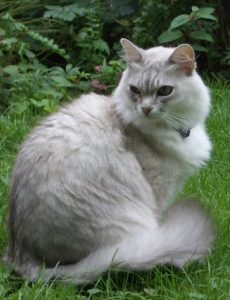 The Tiffanie cat, also known as the Asian Semi-Longhair, has its origins in the United Kingdom in the 1980s. The breed was developed as part of the Asian group by crossing Burmese cats with Chinchillas (a type of Persian cat). Baroness Miranda von Kirchberg played a significant role in this breeding program. The goal was to create a cat that combined the Burmese’s friendly temperament with the luxurious semi-long coat of the Chinchilla. The Tiffanie was officially recognized by the Governing Council of the Cat Fancy (GCCF) in the UK in the late 1980s.
The Tiffanie cat, also known as the Asian Semi-Longhair, has its origins in the United Kingdom in the 1980s. The breed was developed as part of the Asian group by crossing Burmese cats with Chinchillas (a type of Persian cat). Baroness Miranda von Kirchberg played a significant role in this breeding program. The goal was to create a cat that combined the Burmese’s friendly temperament with the luxurious semi-long coat of the Chinchilla. The Tiffanie was officially recognized by the Governing Council of the Cat Fancy (GCCF) in the UK in the late 1980s.
Types Within the Tiffanie Breed
The Tiffanie itself is a distinct type within the broader Asian group of cats, which includes several varieties. While the Tiffanie is unique for its semi-longhair, it shares many characteristics with other types within the Asian group, such as the Asian Shorthair, Burmilla, and Asian Smoke.
Asian Self
Description: Solid color cats, including tortoiseshell variations.
Features: Uniform color throughout the coat with a glossy and smooth texture.
Asian Shaded or Burmilla
Description: Cats with a silver or golden base color and darker shading at the tips.
Features: A unique tipped or shaded effect, giving a shimmering look.
Asian Smoke
Description: Cats with a solid color overlay and a lighter undercoat.
Features: Striking smoky appearance due to the contrast between the topcoat and undercoat.
Asian Tabby
Description: Cats with various tabby patterns, including classic, mackerel, and spotted tabbies.
Features: Intricate patterns with a reduced melanin concentration, resulting in lighter markings.
Physical Appearance: Grace and Beauty
The Tiffanie is a medium-sized cat with a muscular yet elegant build, typically weighing between 8 to 15 pounds. Their head is slightly rounded with a short, blunt muzzle. The large, expressive eyes can be green or yellow, depending on the coat color. The ears are medium to large, set well apart, and slightly rounded at the tips.
The coat of the Tiffanie is semi-long, silky, and smooth, often requiring regular grooming to prevent matting. They come in a variety of colors and patterns, including solid, tabby, smoke, and shaded varieties. Common colors include black, blue, chocolate, and lilac.
Personality: The Affectionate and Playful Companion
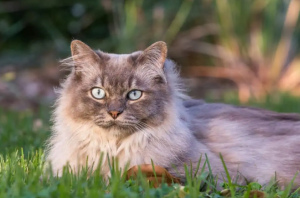 Tiffanie cats are known for their affectionate and social nature. They thrive on human companionship and often form strong bonds with their owners. These cats are playful, intelligent, and curious, making them excellent pets for families and individuals alike. Compared to other breeds, Tiffanies are more interactive and less aloof than typical domestic longhairs, yet not as demanding as some Siamese or Burmese cats.
Tiffanie cats are known for their affectionate and social nature. They thrive on human companionship and often form strong bonds with their owners. These cats are playful, intelligent, and curious, making them excellent pets for families and individuals alike. Compared to other breeds, Tiffanies are more interactive and less aloof than typical domestic longhairs, yet not as demanding as some Siamese or Burmese cats.
Lifespan: A Long and Healthy Life
The Tiffanie cat is a relatively healthy breed with a lifespan ranging from 12 to 18 years. Some individuals can even live into their early 20s with proper care. Regular veterinary check-ups, a balanced diet, and a stimulating environment contribute to their longevity.
Interesting Facts About the Tiffanie Cat
- Unique Origins: The Tiffanie was bred to combine the friendly temperament of the Burmese with the luxurious coat of the Chinchilla.
- Versatile Coat Patterns: This breed’s coat patterns can range from solid colors to intricate tabby markings and even smoke or shaded effects.
- Affectionate Nature: Tiffanie cats thrive on interaction and often form strong bonds with their human families, making them excellent companions.
- Energetic and Playful: Their high energy levels and playful nature make them suitable for active households with plenty of toys and engagement opportunities.
- Distinct from Chantilly-Tiffany: The Tiffanie breed is often confused with the Chantilly-Tiffany, but they are distinct breeds. The Chantilly-Tiffany has a semi-long, silky coat in solid colors, while the Tiffanie comes in various patterns and is part of the Asian group.
The Tiffanie cat, with its rich history, elegant appearance, and affectionate personality, continues to captivate cat enthusiasts worldwide. Whether you’re drawn to their striking looks or their engaging companionship, the Tiffanie cat is a breed that brings joy and elegance to any home.
Unveiling the Enchanting Asian Cat: A Journey Through History, Traits, and Facts
The Origin and History of the Asian Cat
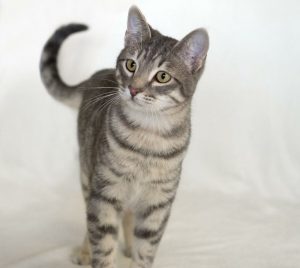 The Asian cat, also known as the Asian Shorthair, has its roots in the United Kingdom. The breed’s development began in the 1980s, spearheaded by Baroness Miranda von Kirchberg. The objective was to create a breed that combined the Burmese cat’s body structure with a wider variety of colors and patterns. By 1989, the breed gained recognition from the Governing Council of the Cat Fancy (GCCF) in the UK. The Asian cat is a descendant of the Burmese and other domestic cats, specifically bred to expand the color and pattern palette available in the Burmese lineage.
The Asian cat, also known as the Asian Shorthair, has its roots in the United Kingdom. The breed’s development began in the 1980s, spearheaded by Baroness Miranda von Kirchberg. The objective was to create a breed that combined the Burmese cat’s body structure with a wider variety of colors and patterns. By 1989, the breed gained recognition from the Governing Council of the Cat Fancy (GCCF) in the UK. The Asian cat is a descendant of the Burmese and other domestic cats, specifically bred to expand the color and pattern palette available in the Burmese lineage.
The Asian Group: A Spectrum of Colors and Patterns
The Asian cat group, in appearance, is nearly identical to the Burmese breed but stands out due to its broader range of colors and patterns. Unlike the Burmese, the Asian cats come in various hues and patterns, including the semi-longhaired Tiffanies. Here’s a closer look at the types within the Asian group:
Asian Self
Description: These cats are characterized by a uniform solid color throughout their coat, with tortoiseshell variations also included.
Sub-Type: Bombay
Color: Self/solid black
Features: The Bombay cat, a sub-type of the Asian Self, has a sleek black coat that is shiny and dense.
Bombay Cat Details: The solid black Bombay under the Asian Self-category has a slightly different origin but is also developed in the UK. In the early 1980s, kittens resulting from mismatings of European Burmese with black domestic short-haired cats were developed into the British-type Bombay. Additionally, there is an American-type Bombay developed in the United States by crossbreeding sable American Burmese and black American Shorthair cats. American Bombays have a sleek, panther-like black coat and bright copper-golden eyes. British-type Bombays prefer golden eyes, but yellow through green is acceptable, with a preference for greater depth of color.
Asian Shaded or Burmilla
Description: These cats have a striking appearance with a silver or golden base color and darker shading on top, creating a tipped or shaded effect.
Colors: Silver or golden shaded and tipped
Features: The Burmilla, a popular type in this category, exhibits a shimmering, ethereal look due to its unique color distribution.
Asian Shaded Details: The Asian Shaded (also known as the Burmilla) has two colors at the tip and at the root of their fur.
Asian Smoke
Description: Smoke-patterned cats have a solid color overlay with a lighter undercoat, giving a smoky, shimmering effect.
Color: Smoke
Features: This pattern creates a striking contrast between the topcoat and the lighter undercoat, adding depth to the cat’s appearance.
Asian Smoke Details: The Asian Smoke is a non-agouti cat with a white undercoat that is not always noticeable. When the Asian was originally being developed, Burmillas were bred with Burmese. These cats were initially called ‘Burmoire’ due to the moire-like effect of their coats—this look is now considered undesirable for the Asian Smoke.
Asian Tabby
Description: These cats come in various tabby patterns, such as classic, mackerel, and spotted tabbies.
Colors: Diverse tabby patterns
Features: The Asian Tabby showcases intricate patterns that can range from bold stripes to delicate spots, making each cat unique.
Asian Tabby Details: The Asian Tabby is an Asian cat with tabby markings. Unlike regular tabbies, their coat has a reduced melanin concentration, resulting in lighter tabby markings. Asian Tabbies come in all four traditional tabby markings and most tabby colorings.
Tiffanie or Asian (Semi-)Longhair
Description: The Tiffanie is the semi-longhaired variety within the Asian group, offering a luxurious, silky coat that adds elegance to its appearance.
Features: The fur is longer and softer compared to other Asian varieties, often requiring more grooming but providing a beautiful, flowing look.
Tiffanie Details: The Tiffanie (unrelated to the Chantilly-Tiffany) is an Asian cat with medium to long-length hair.
Physical Appearance: Elegance in Every Detail
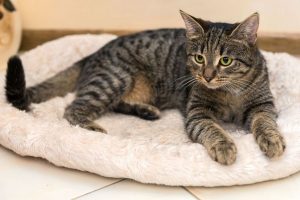 The Asian cat is a medium-sized feline with a muscular yet graceful build. They typically weigh between 8 to 15 pounds. Their head is slightly rounded with a short, blunt muzzle, and large, expressive eyes that can be gold, green, or hazel, depending on the coat color. The ears are medium to large, set well apart, and slightly rounded at the tips.
The Asian cat is a medium-sized feline with a muscular yet graceful build. They typically weigh between 8 to 15 pounds. Their head is slightly rounded with a short, blunt muzzle, and large, expressive eyes that can be gold, green, or hazel, depending on the coat color. The ears are medium to large, set well apart, and slightly rounded at the tips.
The coat of the Asian Shorthair is short, fine, and close-lying, while the Asian Longhair sports a semi-long, silky coat. Colors and patterns are diverse, including solid, tabby, smoke, and shaded varieties, with common colors being black, blue, chocolate, and lilac.
Personality: The Playful and Affectionate Companion
Asian cats are known for their outgoing and affectionate nature. They are highly social and enjoy human companionship, often following their owners around the house. These cats are playful, intelligent, and curious, making them excellent pets for families and individuals alike. Compared to other breeds, Asians are more interactive and less aloof than typical domestic shorthairs, yet not as demanding as some Siamese or Burmese cats.
Lifespan: A Long and Healthy Life
The Asian cat is a relatively healthy breed with a lifespan ranging from 12 to 18 years, although some individuals can live into their early 20s with proper care. Regular veterinary check-ups, a balanced diet, and a stimulating environment contribute to their longevity.
Interesting Facts About the Asian Cat
- Unique Breeding Goals: The Asian cat was specifically bred to offer the Burmese’s appealing physique in a wider array of colors and patterns.
- Versatile Coat Patterns: This breed’s coat patterns can range from solid colors to intricate tabby markings and even smoke or shaded effects.
- Social Butterflies: Asian cats thrive on interaction and often form strong bonds with their human families, making them excellent companions.
- Energetic and Playful: Their high energy levels and playful nature make them suitable for active households with plenty of toys and engagement opportunities.
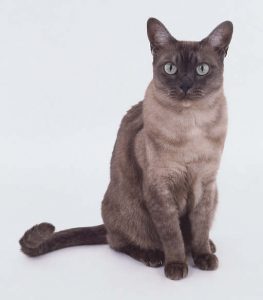 The Asian cat, with its rich history, diverse appearance, and affectionate personality, continues to captivate cat enthusiasts worldwide. Whether you’re drawn to their striking looks or their engaging companionship, the Asian cat is a breed that brings joy and elegance to any home.
The Asian cat, with its rich history, diverse appearance, and affectionate personality, continues to captivate cat enthusiasts worldwide. Whether you’re drawn to their striking looks or their engaging companionship, the Asian cat is a breed that brings joy and elegance to any home.